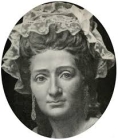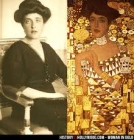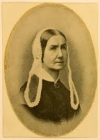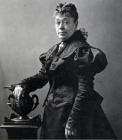blogpage
A Tale of Two Cities (1835)
Dec 30, 2020 by Marlene Wagman-Geller
Only under one roof can guests rub elbows with the game-changers of history: the artists and activists, the saints and sinners. And fascinating as the lives of these individuals may be, the most intriguing member of the gathering is its hostess.
As If Alive (1903)
Dec 26, 2020 by Marlene Wagman-Geller
If these walls could talk what a tale they would tell, and if a Viennese painting could do likewise, it would serve up a bouillabaisse of genocide, moguls, and love. The iridescent canvass, Lady in Gold, is a world-renowned icon, but through artifice, the identity of the raven-haired woman in the portrait vanished.
Butterfly (1871)
Dec 23, 2020 by Marlene Wagman-Geller
While the Italian Mona Lisa’s enigmatic smile has beguiled the ages, the American Mona Lisa’s formidable expression hints of a woman who held little patience for humor. The Victorian painting is entitled, Arrangement in Grey and Black, No. 1, though its colloquial name is Whistler’s Mother. The elderly lady’s prim clothes and staid pose hints at one who did not spend her years whistling Dixie.
Must Go On (1947)
Dec 21, 2020 by Marlene Wagman-Geller
Cats, The Lion King, Hamilton share a commonality other than being immortal musicals: they all won Broadway’s highest accolade: The Tony. But who was the namesake behind theater’s most coveted prize?
Glinda (1900)
Dec 16, 2020 by Marlene Wagman-Geller
In the 1939 classic, The Wizard of Oz, an orphaned girl wistfully sings of a magical world, one far afield from her sepia-colored Kansas farm. Metro-Goldwyn-Mayer based the film on the novel by L. Frank Baum, the wizard behind America’s first fairy-tale. Tragically, the non-literary Dorothy never experienced the land over the rainbow.
Beloved Boy (1885)
Dec 08, 2020 by Marlene Wagman-Geller
The Stanford University seal is the image of a tall tree, the el palo alto, the famous redwood (literally, “tall stick”), the year 1891, and the name Leland Stanford Junior University. Along the inner circle is the German motto, Die Luft der Freiheit Weht, The Wind of Freedom Blows. However, the wind also held a tale of a robber baron, unspeakable grief, and murder.
Raymond’s Secret (1977)
Nov 30, 2020 by Marlene Wagman-Geller
Ancient Greece gave us mythological creatures such as the centaur - man and horse, the satyr - man and goat, the Minotaur - man and bull. And twentieth century America gave birth to a new hybrid: Amazonian and Angel.
“It’s Swell!” (1959)
Nov 22, 2020 by Marlene Wagman-Geller
Who-in the vein of Cher, Madonna, and Giselle-is known only by first name? Who is approaching her sixth decade without a hint of celluloid, loss of pigment, nary a wrinkle? Who has enjoyed a half century long dalliance with her boy-toy?
The Cheek of Time (1652)
Nov 15, 2020 by Marlene Wagman-Geller
When flowers, chocolates, and Hallmark do not convey the depth of devotion, inspiration can be drawn from legendary lovers. The German Richard Wagner composed for wife Cosima the symphony, “Siegfried Idyll.” The Russian Tsar Alexander III presented his Tsarina the original Fabergé egg. Welsh actor Richard Burton gifted Elizabeth Taylor the fifty karat La Peregrina pearl that had once graced the finger of Mary I of England. However, for romantic flourish one can turn to the gesture of a Mogul emperor.
The Enigma (1503)
Oct 25, 2020 by Marlene Wagman-Geller
In Shakespeare’s play Antony and Cleopatra, Antony said of Cleopatra, “Age cannot wither her, nor custom stale/her infinite variety.” While the Roman general was waxing poetic on the Egyptian queen, his words aptly apply to an Italian woman whose allure has proved timeless. Who was the lady who ended her days in a convent, hung in Napoleon’s bedroom, and was the subject of an international manhunt?
The Looking Glass (1865)
Oct 17, 2020 by Marlene Wagman-Geller
“Curioser and curiouser,” Alice cried as she tumbled down the rabbit-hole. Her words summarize the relationship between an Oxford mathematics professor and his child muse.
A Feminist Manifesto (1942)
Oct 10, 2020 by Marlene Wagman-Geller
“When Johnny comes marching home again/Hurrah! Hurrah!” The lyrics originated from a Civil War song that welcomed the soldiers returning from the Civil War. During World War II, when the men left for Europe, it led to another “Hurrah!” This time it was for the women who traded aprons for overalls, exchanged frying pans for drills.
Amends (1889)
Oct 04, 2020 by Marlene Wagman-Geller
In 1970, the quintessential hippie, Janis Joplin, crooned, “Oh Lord won’t you buy me a Mercedes Benz…” In all probability, Joplin did not know the strange story that lay behind the iconic car, that the christening involved an insidious irony.
As Time Goes By
Sep 29, 2020 by Marlene Wagman-Geller
In Casablanca Dooley Wilson crooned, “You must remember this/A kiss is just a kiss…” However, in one occasion, a kiss became an iconic image of the 20th century.
Eve
Sep 14, 2020 by Marlene Wagman-Geller
A window that displays one of the world’s most exclusive views? Check. Broke a ninety-one-year-old celestial ceiling? Check. Is in charge of a masterpiece that millions crane their necks to ogle? Check. Who is this Wonder Woman who wears classy couture rather than spandex shorts?
Quite Contrary
Sep 07, 2020 by Marlene Wagman-Geller
A staple of the nursey is the rhyme, “Mary Had a Little Lamb.” What is not as well-known is its back-story: Sarah Josepha Hale wrote it as a Christian allegory-Mary, the mother of Christ, the lamb, a symbol of Jesus. Behind a popular tongue twister lurks another Mary.
The Bitter and the Sweet
Aug 05, 2020 by Marlene Wagman-Geller
“How far that little candle throws its beams! So shines a good deed in a weary world.”
– William Shakespeare The Merchant of Venice
Living under the reign of terror results in the milk of human kindness or acts of brutality. During the dark days of the Holocaust, some individuals sheltered their Jewish neighbors; others turned a blind eye to the hapless. History has enshrined the names of the Righteous of the era when mankind buried its humanity. Raoul Wallenberg of Sweden saved the Jews of Hungary; Irene Sendler of Poland rescued children from the Warsaw Ghetto, Miep Gies of Holland helped the families hiding in the Secret Annex. An unsung hero was a girl who, enmeshed in a spider’s web, proved that in an era where the norm was random acts of madness, there could still exist random acts of kindness.
“Imagine”
Jul 27, 2020 by Marlene Wagman-Geller
“It’s a Man’s Man’s Man’s World” is a song James Brown recorded in a New York studio in 1966, and, given the era in which he wrote, his words rang true. A map of Manhattan illustrates that men shaped the city and left behind their names as their calling cards.
I am Unworthy
Jul 22, 2020 by Marlene Wagman-Geller
The other day I pulled into the drive-through at Starbucks to order my venti latte non-fat milk extra foam, extra hot latte. I was taken aback when, rather than ask for payment, the barista informed me that the person in front of me had paid for my drink. I beamed behind my mask; in the time of the pandemic, kindness still visited. I proceeded to “pay it forward.” The vignette turned my thoughts to the woman who, more than anyone, had dedicated her life adhering to the biblical injunction, “It is more blessed to give than to receive.”
Trixie: A League of Her Own
Jul 17, 2020 by Marlene Wagman-Geller
When one contemplates baseball’s greatest hit, most likely the image is of Yankee slugger Babe Ruth hitting the ball until it disappears into the horizon. However, the sport’s greatest hit was made not on the field, not in a stadium. Rather, it originated over a century ago in a New York City subway.












_w140_h140/mercedes(1)_04040413.jpeg)









